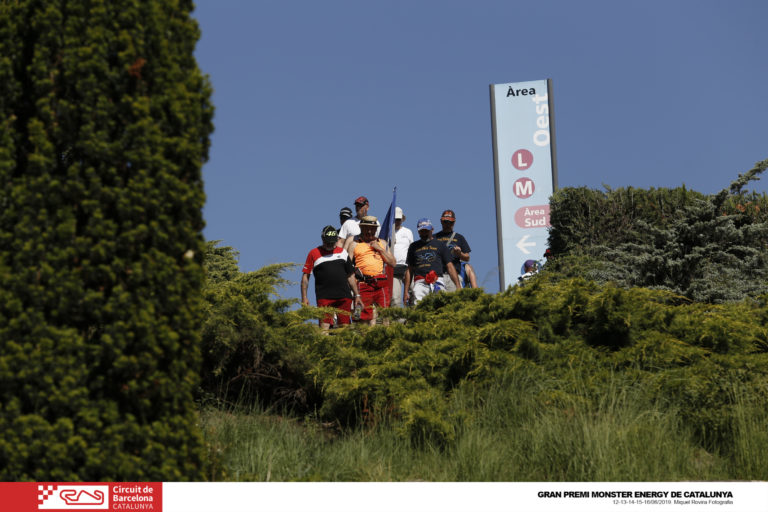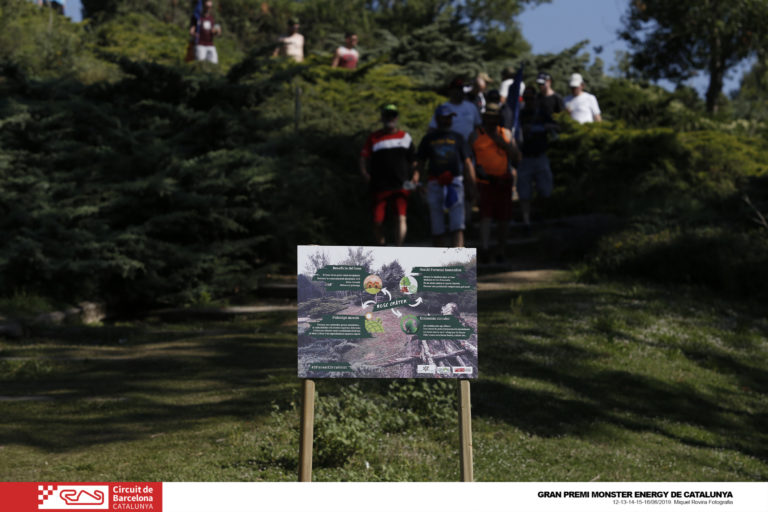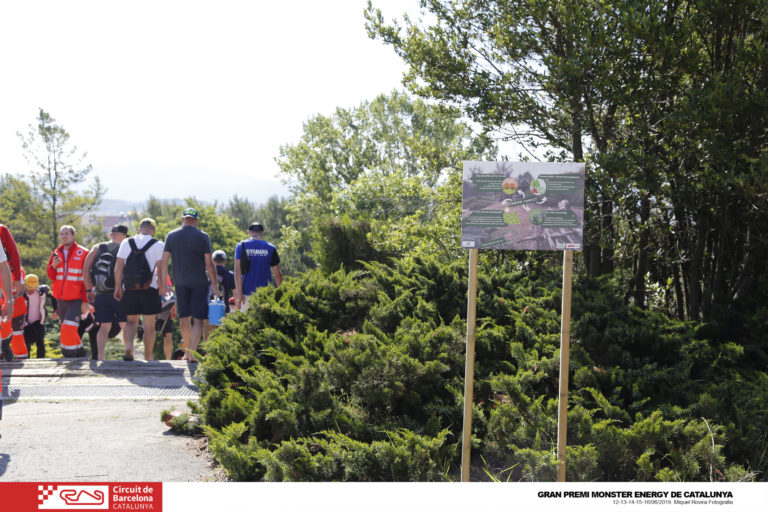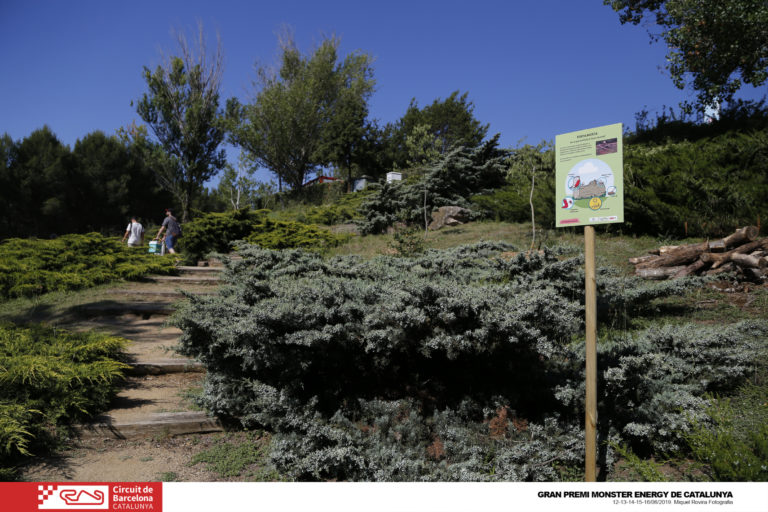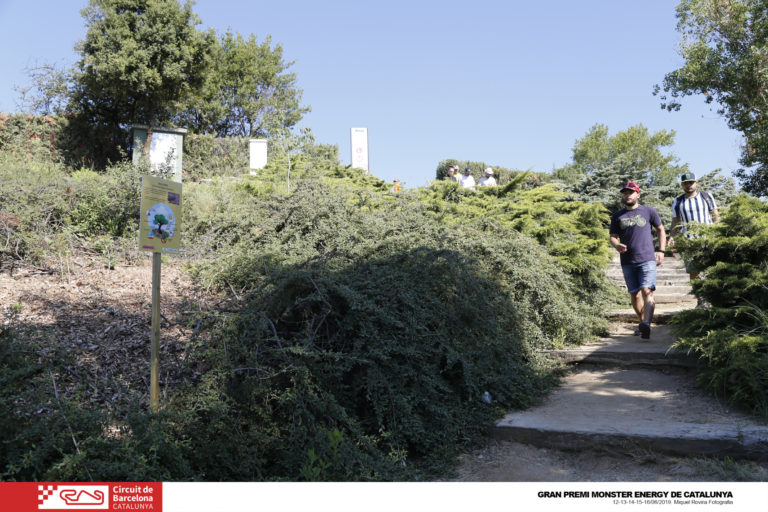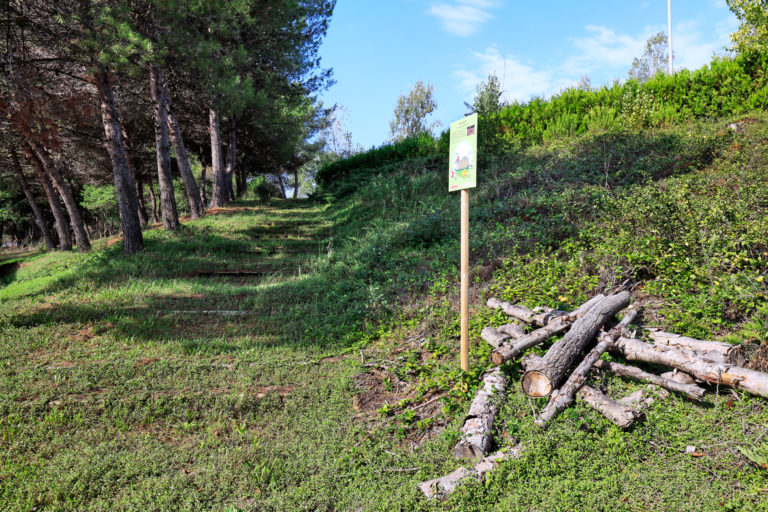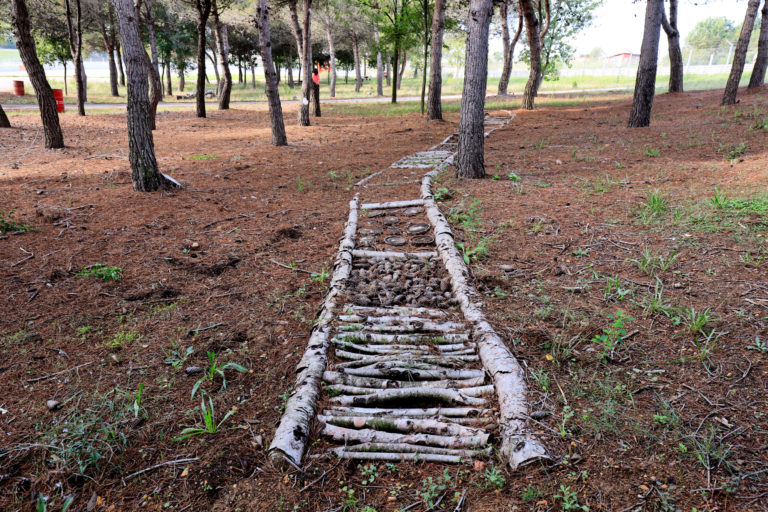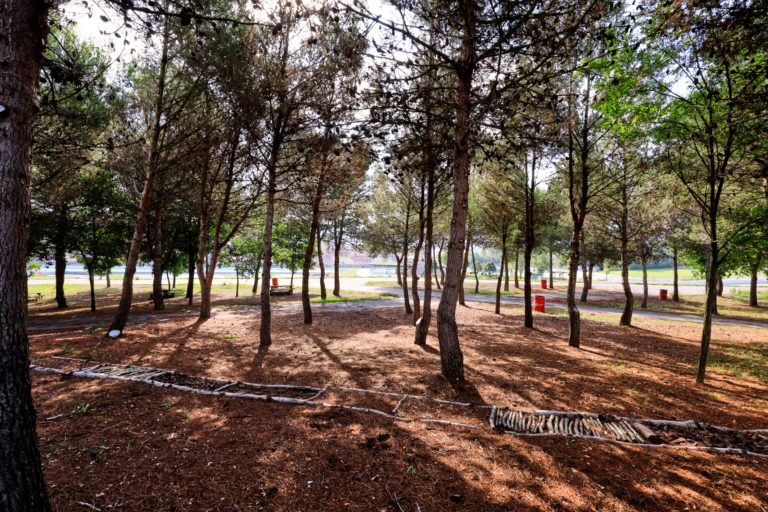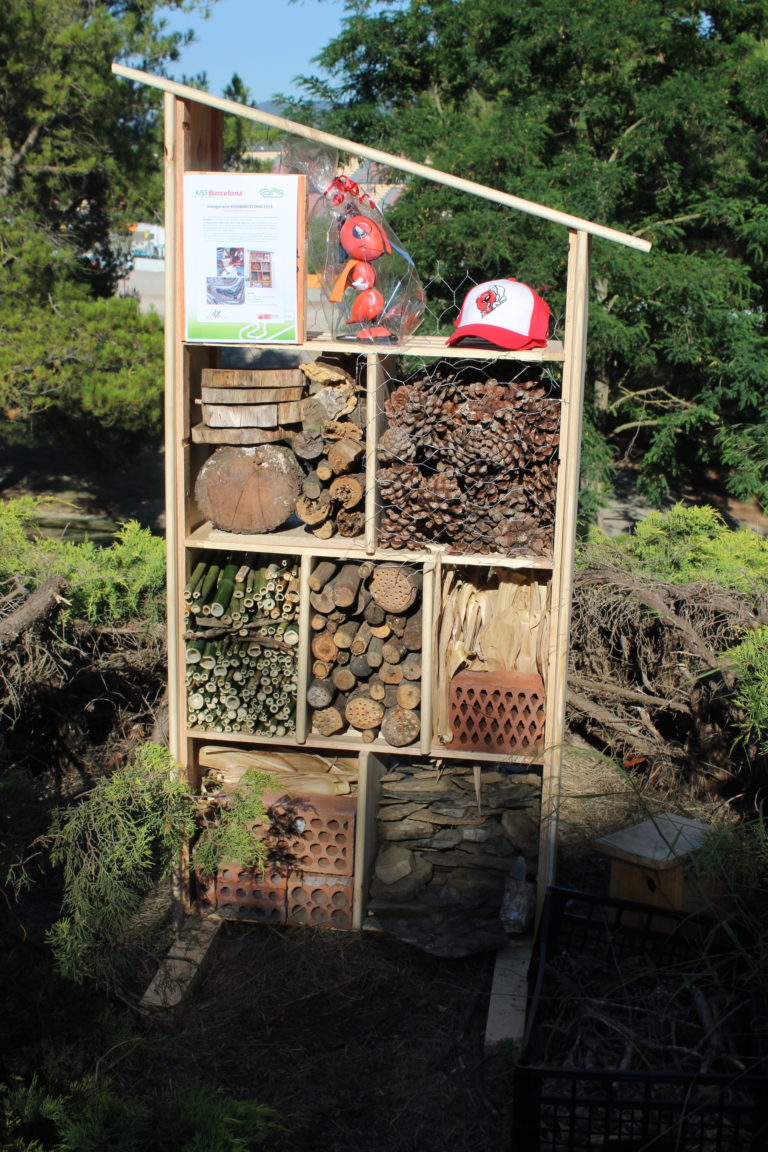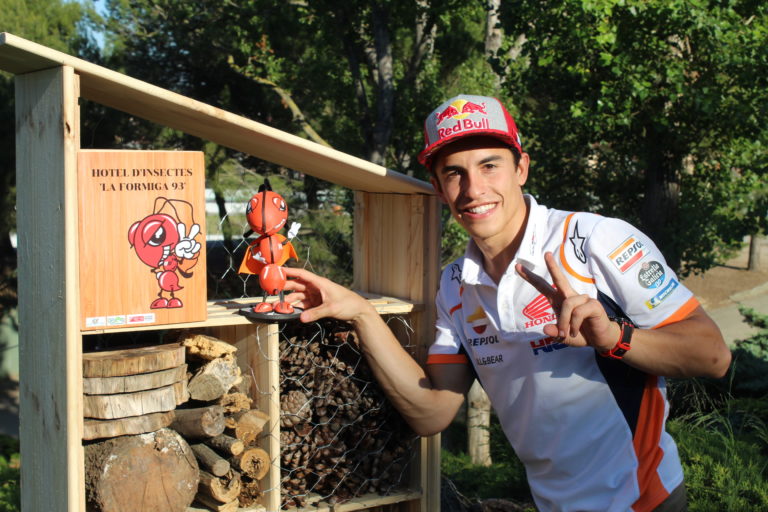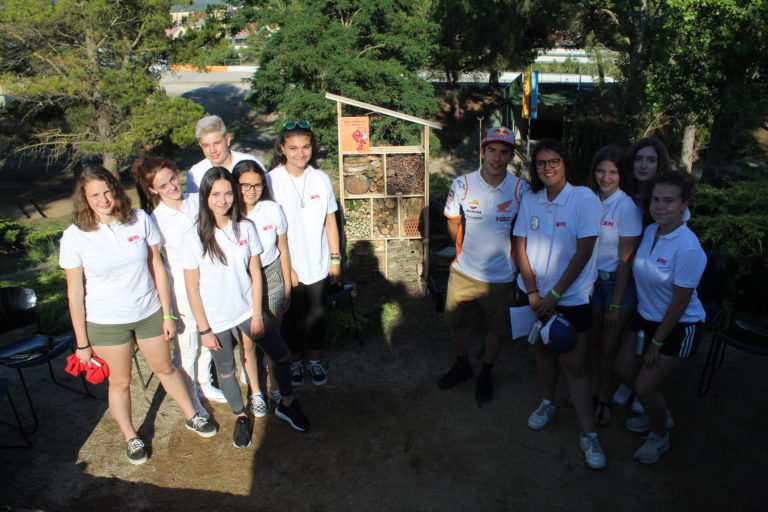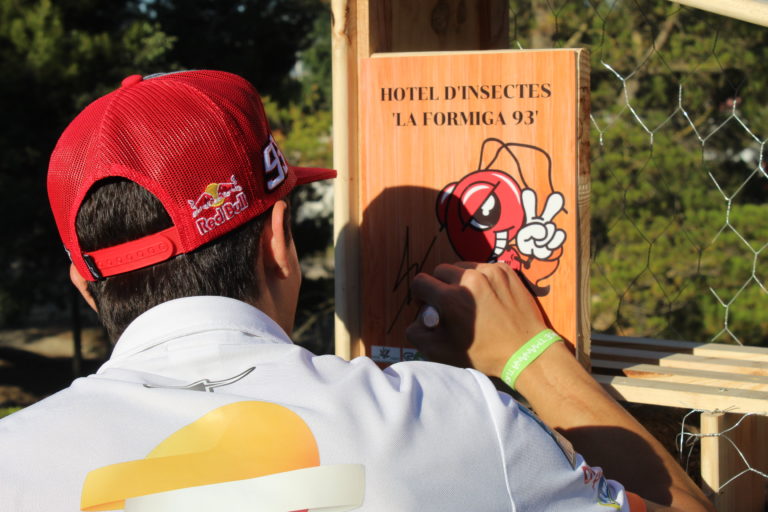The Catalan track is a sports facility with more than 25 hectares of green areas. For this reason, in 2019 the Circuit started a project to improve the biodiversity of its forest with the collaboration of Social Forest, a sustainable forest management company oriented to the training and labour insertion of young people in a situation of social exclusion or unemployment. BOSCAT is currently the company following the initial project with Dual Training students.
With the aim of improving biodiversity, an autochthonous, autonomous, more attractive and environmentally responsible ecosystem is recreated, and educational and recreational value is added thanks to the descriptive supports of the actions in the forest itself.
Reforestation of ecosystems is essential to meet the United Nations Sustainable Development Goals, and it is for this reason that UNEP has proclaimed reforestation as a global priority for the decade 2021-2030.
From the beginning, this project is the result of circular financing generated by sustainable actions such as the proceeds obtained during the previous season from the sale of the Circuit’s reusable cups.
2019. Crater Forest
This is the first area of action, located between the Racc School and the Mirador and inaugurated by the FIM’s Environment Ambassador, Marc Marquez. An insect hotel was also presented during the event.
The other most noteworthy actions carried out during the first phase were:
- Making an inventory of the state of health of the Circuit’s trees.
- Trimming of pine trees
- Felling of eucalyptus trees
- Felling of trees affected by Tomicus
- Sanitary and improvement felling
- Planting of trees of autochthonous species.
- Elimination of invasive species.
In addition, and as a circular economy action, nesting boxes were made with the plant remains obtained once the trees in the area had been felled.
2020. The Path of Senses
Continuing in the same direction, the Gran Premio Monster Energy de Catalunya de MotoGP™ 2020, and within the framework of the FIM Ride Green KISSBarcelona programme, served to launch the second phase of action among the green areas of the Crater Forest.
Acting on an additional 0.8 hectares of forest , the Path of Senses, built with natural materials from the forest such as pine cones, earth, logs, etc., and with the aim of connecting spectators with nature, was inaugurated, thus completing the restoration of the entire surface of this area.
Trees of autochthonous species, such as privet and strawberry trees, were also planted using the Cocoon technique. The Cocoon is a kind of biodegradable pot that surrounds the trees and allows the water to be dosed, making watering more efficient by reducing water consumption. It is also a shelter for biodiversity. The diversification of the tree species is important to avoid the vulnerability associated to dominant species and to improve the quality of the habitat, as well as to local wildlife.
Other actions carried out in the area worked on in this phase consisted of:
- Pruning of all trees (196) to facilitate maintenance and improvement work, increasing their resistance to fire and aesthetically improving the forest mass.
- Sanitary and improvement felling of trees and reduction of tree density to improve the quality of the forest stand. This action also helps to fix more CO2 from young trees.
- Management of plant debris that is shredded and spread on site to improve the moisture retention capacity of the soil and thus to improve the water available for vegetation (mulching).
- Installation of dead wood corners, from the same forest, to increase the presence of saproxylophagous invertebrates, the ones in charge of wood decomposition and indispensable to complete the biological cycle of a healthy forest.
- Installation of educational posters with the aim of raising public awareness, taking advantage of the therapeutic effect of the forest. The boards explain the actions performed and their effects on biodiversity. This experience causes a positive transformation in the public’s attitude, and generates positive effects on their health and their well-being. This experience achieves a positive transformation of the public, having a positive effect on their health and well-being.
In 2021
Maintenance continues to be carried out on the area worked on during the first action of 2019 and the second in 2020, with stakes being placed on the planted trees and dead plants and bushes being replaced. Natural regeneration of holm oak, oak and poplar is detected in this area.
The areas where from now on no intervention will be carried out have been identified, as they will be areas of natural succession that favour the biodiversity of plants and insects. These areas are marked with signs and sticks to prevent access by amateurs.
The rest of the actions include:
- Pruning of a total of 71 trees up to 3-4 metres in trunk height of all trees with the aim of facilitating access to wooded areas to carry out all maintenance work, increasing their resistance to fire by eliminating the scale effect caused by low branches and aesthetically improving the forest mass of the entire Circuit its landscape importance.
- Felling of diseased or dying trees in order to reduce the density of trees and improve the quality of the forest mass.
- Planting of native species such as the alligon tree (Celtis Australis), a tree with high resistance to pollution, and the strawberry tree (Arbutus unedo), a native shrub that attracts birds and other insects for its flowering and fruit. The enhanced use of native flora species helps to attract local fauna.
- Circular economy with tyres as pots for aromatic plants.
In 2022
As a novelty, a tree in the shape of a snail has been placed, which is intended to be a fantasy space for children and dead wood, the habitat for many of the insects and microorganisms. Five wooden silhouettes of native animals have been placed so that visitors can find them and learn about the ecosystem in which they live. A tree transformed into a bench has also been installed, on which messages about the territory, the fauna and flora, and the culture have been transferred. This bench is a unique piece made from local dead trees.
In addition to the maintenance of the areas of the previous phases, the undergrowth, i.e. the plants that grow under the trees, has been worked on. Native species such as quercus ilex (holm oak), quercus rotundifolia (holm oak), arbutus unedo (strawberry tree), Pistacia lentiscus (mastic tree), among others, have been planted.
All this work has been carried out by young people from the Dual Training project, young people who belong to different groups at risk of social exclusion.

